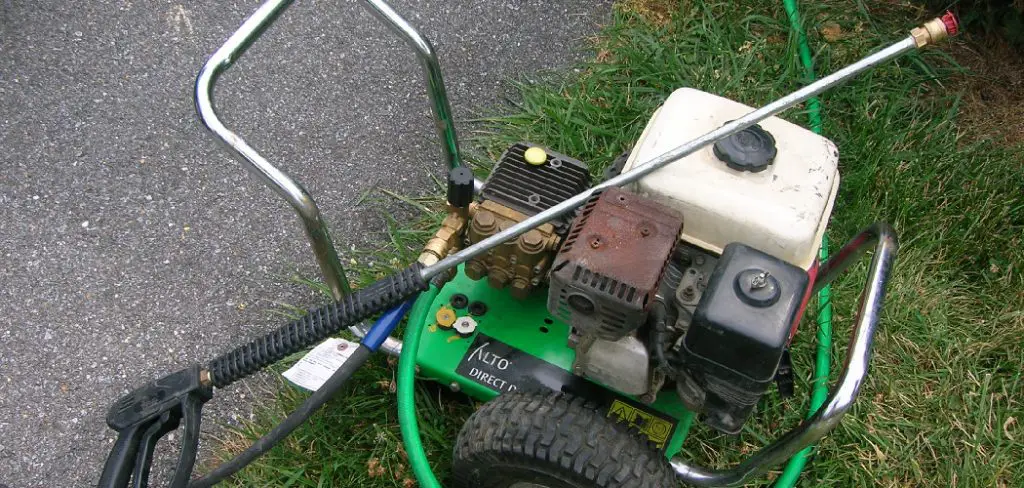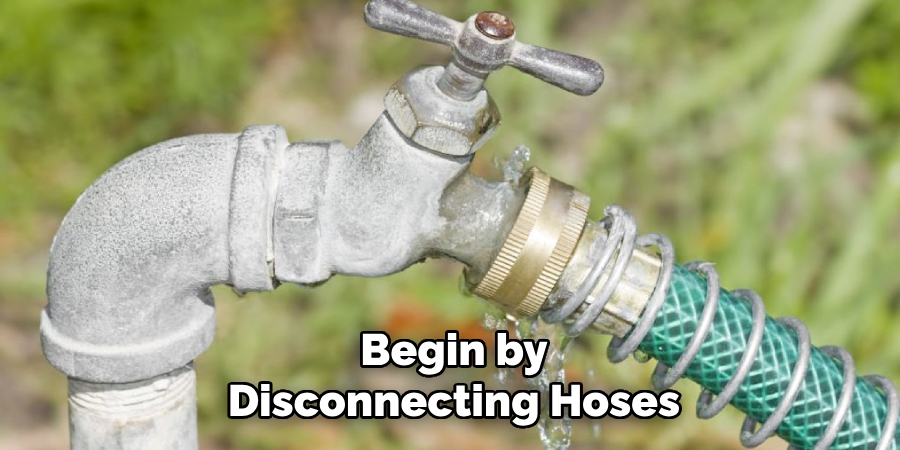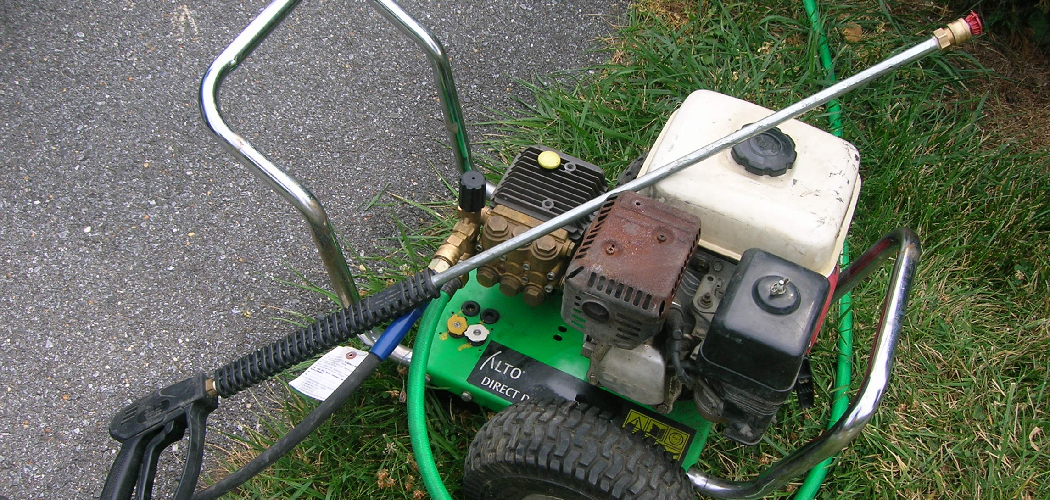The purpose of this article is to emphasize the importance of winterizing a pressure washer pump to prevent damage caused by freezing temperatures. Without proper winterization, pressure washers can suffer from cracked pumps and frozen water lines, ultimately leading to costly repairs that can impact your outdoor maintenance plans.

By taking the time to learn how to winterize pressure washer pump, you can safeguard your investment and ensure its longevity. This article will provide a comprehensive overview of the key steps involved in winterizing, including cleaning, draining, and using antifreeze, as well as additional methods to protect your equipment during the cold months. By following these guidelines, you can rest assured that your pressure washer will be ready for spring use without any complications from winter-related damage.
Gather Necessary Supplies
To successfully winterize your pressure washer pump, it is essential to gather all necessary supplies beforehand. Having the right tools and materials on hand will streamline the process and ensure no missed steps, protecting your equipment efficiently.
List of Supplies
- Essential Items:
- Antifreeze (non-toxic for pressure washers)
- A bucket for collecting water
- A garden hose for flushing out the remaining water
- Pliers for disconnecting hoses
- A wrench for any needed adjustments
- Additional Tools:
- Towels or rags for cleaning any spills or debris
- A pump-saver product, if available, to enhance protection for the pump
Safety Precautions
Safety should be your priority when preparing to winterize your pressure washer pump.
- Protective Gear: Always wear gloves and eye protection when handling antifreeze and other chemicals to avoid skin or eye contact.
- Workspace: Prepare a clean and organized workspace that is free of debris. This will allow you to work effectively and safely, reduce the risk of accidents, and ensure that you can focus on completing the winterization process properly.

Prepare the Pressure Washer for Winterization
Step 1: Disconnect and Drain the Pressure Washer
- How to Do It: Turn off the pressure washer and ensure it is disconnected from the power source. Remove the water supply hose along with any attachments. To drain all water from the pump and hoses, run the pressure washer for a few minutes without the hose attached. This will effectively expel any residual water trapped within the system.
- Why It’s Important: Properly removing water is crucial to prevent freezing. Leftover water can freeze inside the pump, leading to cracks or permanent damage, which can be costly to repair.
Step 2: Clean the Pressure Washer
- How to Do It: Use a dry cloth to thoroughly clean the pressure washer’s exterior and interior parts. Focus on the pump and hose connections, removing any dirt, debris, or leftover cleaning solution. A gentle cleaner may be used for stubborn residues as long as it does not harm the components.
- Why It’s Important: Maintaining a clean pressure washer is essential for ensuring that no contaminants or residual water remain, which could interfere with the winterization process or contribute to issues when the equipment is reactivated in the spring.
Steps on How to Winterize Pressure Washer Pump
Step 1: Use a Pump Saver or Antifreeze
To begin the winterization process, using a pump saver or non-toxic antifreeze is essential to protect your pressure washer pump. How to Do It: Start by pouring the recommended amount of pump saver or antifreeze into the pump inlet. Always refer to the manufacturer’s guidelines for the correct dosage, as this ensures effective protection. After adding the antifreeze, run the pressure washer for a few moments without any attachments; this allows the antifreeze to circulate thoroughly throughout the pump and into the hoses.
Why It’s Important: Antifreeze is crucial for safeguarding the pump’s internal components against freezing conditions. If water left in the pump freezes, it can lead to cracks, permanent damage, and potentially costly repairs when you try to start it up in the spring. Taking this simple step can significantly extend the lifespan of your equipment and ensure it’s ready for use when the warmer weather returns.
Step 2: Drain Remaining Water
Once the antifreeze has been introduced, it’s critical to drain any remaining water from the system. How to Do It: Begin by disconnecting any hoses attached to the pressure washer, ensuring there’s no residual pressure in the system. Allow any excess water to drain completely from the pump and hoses. To facilitate this process, gently tilt the pressure washer to ensure that all water is expelled.

Why It’s Important: Draining all remaining water prevents ice formation. Any water left trapped in the pump or hoses can freeze, causing irreversible damage. By ensuring that your system is completely dry, you minimize the risk of cracked or damaged components, thus maintaining the integrity and functionality of your pressure washer for the next season.
Step 3: Store the Pressure Washer
After winterizing, proper storage of your pressure washer is the final step in the winterization process. How to Do It: Place your pressure washer in a dry and sheltered location where temperatures remain above freezing. If you must store it outdoors, provide a waterproof cover to protect it from harsh weather and humidity.
Why It’s Important: Adequate storage prevents exposure to freezing temperatures and protects the pressure washer from the elements, helping to ensure it remains in optimal condition. By taking these precautions, you can avoid unforeseen issues and ensure your pressure washer is ready for action when spring arrives.
Alternative Winterizing Methods
Using a Garage or Shed
One effective method for winterizing your pressure washer is to store it in a garage or shed. How to Do It: Ensure the space is insulated or heated to maintain a stable environment above freezing. Simply place the pressure washer in this sheltered area, keeping it dry and secure from any moisture. Why It’s Important: An enclosed, temperature-controlled space protects the machine from extreme cold while reducing the risk of freezing issues. This proactive measure extends the life of your pressure washer and ensures it’s in optimal working condition come spring.
Adding an Insulation Blanket
If indoor storage isn’t an option, you can further safeguard your equipment by using an insulation blanket. How to Do It: Wrap the pressure washer with an insulation blanket or cover specifically designed for outdoor equipment. Ensure it fits snugly around all parts, providing comprehensive coverage against cold air. Why It’s Important:

This add-on offers an extra layer of insulation, helping to shield the machine from freezing temperatures. By employing an insulation blanket, you mitigate the risk of damage caused by subzero conditions, ensuring that your pressure washer remains protected and ready for use when the warmer months arrive.
Maintenance Tips for Spring
Inspect Before Use
How to Do It: Before using the pressure washer in spring, inspect it for any signs of damage or leaks. Check that the antifreeze has been completely expelled and replace any worn parts if needed.
Why It’s Important: Ensuring that the pressure washer is ready for use and functioning properly after the winter season is vital to prevent unnecessary repairs and ensure efficient operation.
Test the Pressure Washer
How to Do It: Run a short test cycle to ensure the pressure washer operates correctly. Check for proper pressure output and listen for any unusual noises during operation.
Why It’s Important: Verifying that the pressure washer is working correctly helps avoid issues during the season’s first use, allowing you to tackle your cleaning tasks without interruptions.
When to Call a Professional
Persistent Issues
What to Do: If you encounter issues such as leaking or a failure to operate properly after winterization, it’s best to consult a professional for a thorough inspection and repair. Ignoring these signs can lead to more significant, costly damage over time.

Complex Winterization
What to Do: If you have a complex pressure washer or are unsure about the winterizing process, consider hiring a professional to ensure proper care and maintenance. Their expertise can help safeguard your equipment against future issues and extend its lifespan.
Frequently Asked Questions (FAQs)
1. How Often Should I Winterize My Pressure Washer?
Winterizing your pressure washer at the end of the washing season is recommended, especially if you live in an area where temperatures drop below freezing. Preventative measures each year help avoid potential damages and ensure your equipment is ready for use when warmer weather returns.
2. Can I Use Regular Water Instead of Antifreeze During Winterization?
Using regular water is not advised for winterization, as any water left inside the pump or hoses can freeze and cause damage. Antifreeze is specifically designed to prevent freezing, making it a crucial component in protecting your pressure washer during cold months.
3. What Are the Signs that My Pressure Washer Needs Professional Maintenance?
Persistent leaks, failure to start, unusual noises during operation, or any damage that affects its functionality are signs that you may need professional maintenance. If you notice any of these issues, it’s best to consult a professional to avoid further damage and ensure proper care.
Conclusion
In conclusion, effectively winterizing your pressure washer pump is essential to preserving its functionality and longevity. To recap the key steps, begin by adding antifreeze to safeguard the pump’s internal components, followed by thoroughly draining any remaining water from the system to prevent ice formation. Proper storage in a sheltered environment, or with the use of an insulation blanket, further protects your equipment from harsh winter conditions.
The importance of winterization cannot be overstated, as taking these precautions prevents costly damage and ensures your pressure washer is ready for action when spring arrives. Remember the crucial phrase “how to winterize pressure washer pump” to guide your winterization process. By preparing your equipment well ahead of freezing temperatures, you can avoid last-minute issues and maintain your pressure washer in optimal working condition for years to come.
Check it out to Install Wall Mounted Toilet

